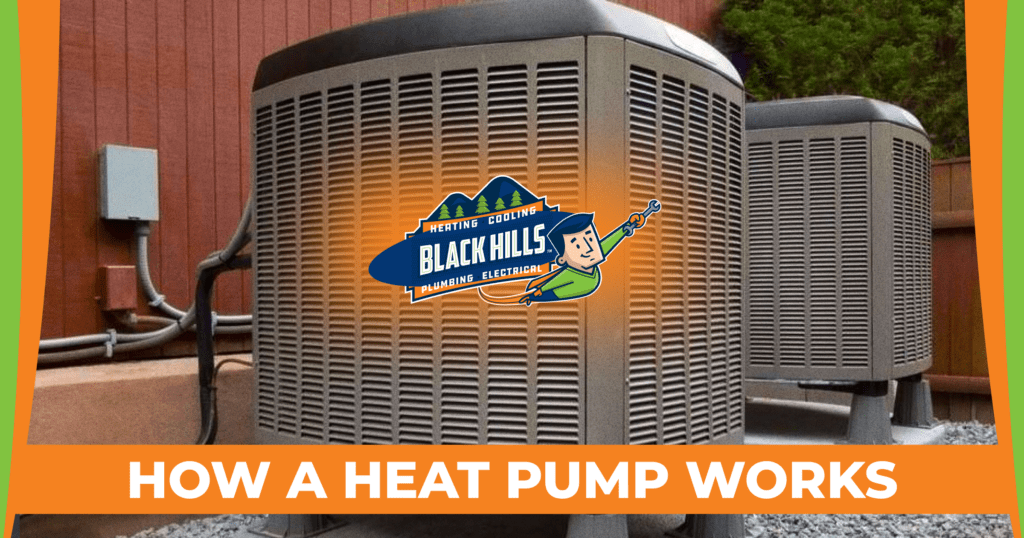A heat pump is an efficient device that moves heat from one place to another. It can provide heat but also operate in reverse to cool a building. However, the process by which it does so is different than a standard air conditioner. We will explain the function of a heat pump, some parts found on a heat pump diagram, and the types of heat pumps available.
What a Heat Pump Does
Unlike a furnace, a heat pump does not generate heat on its own. Instead, it absorbs heat energy from outside. Even in cooler temperatures, it can transfer ambient warmth indoors. The system is less efficient in temperatures below freezing, so a heat pump is better suited for milder climates (although it can operate in conjunction with a furnace or supplemental heater).
Heat pumps operate on the principle of heat transfer. They leverage thermodynamics, in which heat flows from warmer areas to cooler areas. But using a little bit of energy, they instead pull heat from an area where the temperature is relatively low and move it to a higher temperature zone.
Parts of a Heat Pump
Looking at any heat pump diagram, you will see the following components:
- Outdoor Unit: The outdoor coil can run as a condenser in cooling mode or an evaporator to provide heat. It contains a fan that pulls in outside air to enable heat exchange.
- Indoor Unit: An air handler with a coil that can function as an evaporator to cool your home or condenser to provide heat. A fan draws air across the coil and into a system of ducts.
- Reversing Valve: Reverses the flow of refrigerant in an air-source heat pump, so the unit releases heat outside rather than pump it into your home. By reversing the refrigerant, the coolant can absorb heat from indoors and cool as it circulates in order to maintain a continuous cycle.
- Expansion Valve: Regulating the flow of refrigerant, it can reduce the pressure and temperature of the medium as necessary, as it travels toward the outdoor coil where it becomes a low-pressure, low-temperature liquid.
Upon leaving the outdoor unit, the refrigerant is a low-pressure, low-temperature vapor (in heating mode). It then absorbs heat on its way to the compressor and reaches the inside coil as a high-pressure, high-temperature vapor, allowing the system to release heat into the indoor air. As it does so, the refrigerant once again becomes a high-pressure, high-temperature liquid until it cycles back to the expansion valve.
Types of Heat Pumps
Heat pumps come in several types of designs. Here are some examples:
- Air-Source Heat Pump: Absorb heat from outdoor air, even if it’s relatively chilly. Heat is transported by refrigerant through coils to an indoor unit. The indoor air handler has a fan, coil, and optional supplemental electric heating element (in a split system).
- Ground-Source Heat Pump: Contains closed-loop tubing buried underground that circulates a water/antifreeze solution. Underground temperatures, below the frost line, are relatively stable all year, so can supply warmer air in winter and cooler air in summer.
- Groundwater Heat Pump: Usually pumps water from a well, removes heat from that water, and uses it to heat a home. This water is then returned to another well. Meanwhile, heated or cooled air is distributed by ductwork.
- Mini-Split Heat Pump: Works without air ducts (which won’t be found on a heat pump diagram for this unit). An outdoor air-source unit connects to multiple indoor units to heat or cool individual rooms, areas, or floors.
- Reverse Cycle Chiller: Pumps water instead of air to provide more effective heating in freezing temperatures. It works using an insulated water tank and fan/coil system to pump heated or cooled air to heating zones. Water can also be pumped through a radiant floor heating system.
- Cold-Climate Heat Pump: Designed to work more efficiently in colder weather, it can adjust output up or down by detecting the minimum amount of energy it needs to provide the desired temperature level.
Contact Black Hills Home Services
Throughout the Olympia area, we install heat pumps, which are highly efficient for heating and cooling. The benefits include lower heating bills, quiet operation, and humidity regulation. Our technicians are trained to provide high-quality heat pump installation, repair, and maintenance and we offer a 100% money-back guarantee. To learn more or request service, call 888-834-7479 today.
